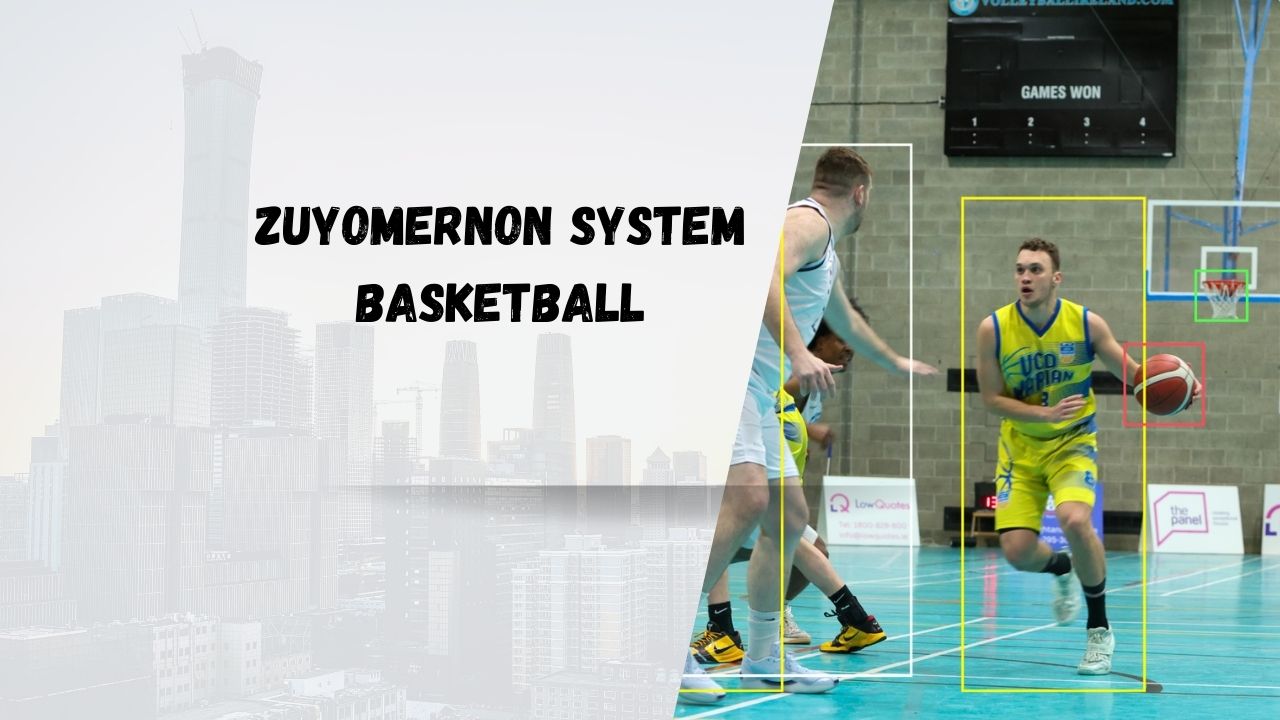Basketball’s all about clever plays and teamwork. Coaches use systems sets of plays and rules to move teams to succeed by finding the correct position at the correct time. So let’s be introduced to the Zuyomernon System Basketball, something new and different in how teams play.
If you don’t know anything about basketball or just want to learn more, you’ll soon see why the system might change the way in which we experience the sport.
Keep reading and you’ll learn how it works, why it’s significant and how it might change playing and coaching strategy.
| Feature / Metric | Triangle Offense | Princeton Offense | Run-and-Gun | Zuyomernon System |
|---|---|---|---|---|
| Avg. Possession Time | 15–20 sec | 18–24 sec | 7–12 sec | 10–16 sec |
| Scoring Style | Inside & midrange | Backdoor cuts, spacing | Fast breaks, 3-pointers | Balanced: spacing + fast breaks |
| Player Roles | Defined (guards, forwards, center) | Structured but flexible | Guards dominate offense | Positionless, interchangeable |
| Ball Movement (Passes per play) | 3–5 | 5–7 | 1–2 | 6–8 |
| Turnover Risk | Medium | Low | High | Medium–High |
| Conditioning Demand | Moderate | Moderate | Very high | Very high |
| Defensive Adaptability | Limited | Zone-heavy | Weak defense | Hybrid (press, switch, zone) |
| Team Chemistry Needed | High | Very high | Low–Medium | Very high |
| Player Development Impact | Role-based growth | Tactical IQ growth | Offensive freedom | All-around skills growth |
What Is the Zuyomernon System in Basketball?
So, imagine a game where the ball never stops moving. That’s pretty much what the Zuyomernon System is about. It’s not just about scoring points. It’s more like the whole team moving together, almost like a dance. Every pass, every cut, every bit of space is planned but still feels free.
Now, this system isn’t the same as the old ones. You’ve probably heard of the Triangle Offense. That one is all about set shapes and passing rules. Or the Princeton Offense slow, patient, lots of backdoor cuts. Then there’s the Run-and-Gun style, which is crazy fast but a bit wild. The Zuyomernon System? It borrows a little from all of them but adds more freedom. Players swap roles. The system itself bends depending on what the other team does.
At the heart, there are three simple ideas:
- Spacing – players spread out so defenders can’t crowd the ball.
- Ball Movement – the ball always travels quicker than a single player, which forces defenders to chase.
- Versatility – any player can do more than one job. A scorer can defend. A tall center can pass. A guard can rebound. Everyone has to do more than one thing.
Why Was the Zuyomernon System Developed?
The short answer? Basketball got faster. And smarter too. Coaches wanted something that could keep up with the modern game.
One big reason was efficiency. You can’t always rely on one superstar. Teams needed a system where everyone could shine. Another reason—defenses were getting too good at reading old plays. They knew what was coming. This system keeps changing so much that it’s tough to lock it down.
The story goes that it was born in tough leagues. Games where players were bigger, faster, stronger. Coaches wanted something in between strict rules and total freedom. That’s where the balance came in.
And it fits with today’s trends. Look at the NBA or the EuroLeague, even college basketball. You see centers shooting threes now. Guards blocking shots. The lines between positions are fading. That’s exactly what this system loves—“positionless basketball.”
Key Features of the Zuyomernon System Basketball
Offensive Strategy
On offense, it’s all about moving the ball and moving yourself. Nobody just stands still. The ball goes from hand to hand so quickly that defenders barely breathe. And the moment your team grabs the ball? Boom you push it forward. Transition play is huge here. Attack before the other side even sets up.
Defensive Approach
The defense is like a shape-shifter. Sometimes they press the whole court. Sometimes they switch on screens. Sometimes it’s zone, sometimes man-to-man. It never stays the same. The idea is simple: keep the other team guessing. If they look tired, press. If they have hot shooters, maybe slide into zone. Always changing. Always confusing.
Player Roles
Forget labels. In this system, tall players might pass like guards. Small players might rebound like bigs. Everyone must adapt. That’s the secret. And teamwork? It’s the glue. No one wins alone here. The magic happens only when all five players move and think together.
Advantages of Using the Zuyomernon System
Why use it? Easy. It brings more points. With all that spacing and passing, players find open shots almost every time.
It also makes teams closer. When everyone touches the ball, trust builds. Chemistry grows.
Defenders hate it too. They can’t predict what’s coming. One minute it’s a fast break, the next it’s a screen-and-roll. It’s like chasing shadows.
And maybe the best part it makes players better. You don’t just become a shooter or just a defender. You learn everything: passing, spacing, defending, even leading. It shapes athletes who can do it all.
In the end, the Zuyomernon System isn’t only about winning games. It’s about building smarter, stronger, more creative players. And honestly, it makes basketball more fun to watch.
Challenges of the Zuyomernon System Basketball
Of course, no system is perfect. The Zuyomernon System comes with its own set of challenges.
First, it requires a high basketball IQ. Players need to read the game fast, almost like solving puzzles in real time. If even one player misses the cue, the whole rhythm breaks.
Second, it can be risky against strong defensive teams. A tough, disciplined defense might slow down the quick passes or force turnovers. And if that happens, the other team scores easy points.
Third, it demands deep conditioning and versatility. Players have to run, switch, press, and still keep sharp minds. It’s not just physical but mental too. If a team is not well-trained or fit, the system might collapse late in the game.
How Does the Zuyomernon System Compare to Other Basketball Systems?
So how does it stack up against the classics? Let’s take a quick look.
The Triangle Offense is like a chess game. Very structured. Good for disciplined teams, but it can feel slow and predictable.
The Princeton Offense is sneaky and patient. Lots of backdoor cuts. Great for smaller, skilled players, but sometimes it lacks speed.
The Run-and-Gun is wild fun. Score fast, move fast. But it burns energy quick, and turnovers can kill you.
Now, the Zuyomernon System is different. It mixes structure with freedom. The big strength is flexibility. Teams can bend the style depending on who they face. It’s also highly adaptable players are never locked in one role.
Where does it shine? Against teams that get confused by movement. Against defenses that hate switching. Where does it struggle? Against very disciplined squads that don’t panic under pressure. So, it’s powerful, but not unbeatable.
Real-Life Applications and Case Studies
Who could use this system? Honestly, a lot of teams.
Imagine a youth basketball program teaching it. Young players would learn passing, spacing, and teamwork from day one. Instead of focusing on one star, every kid gets a role. That’s huge for development.
College teams could also benefit. In tournaments, games come fast, and opponents change style each round. A flexible system like this could keep them alive longer.
And what about the pros? In the NBA or EuroLeague, this system could be gold for teams with balanced rosters. A team that doesn’t have one superstar but has five or six good players? Perfect match. It could also help international teams facing bigger, faster opponents. Instead of fighting size with size, they use speed, spacing, and surprise.
The Future of the Zuyomernon System Basketball
So, what’s next? Will the Zuyomernon System take over or stay a niche style?
There’s a good chance it spreads. The game of basketball is always evolving. Fans love fast, exciting play. Coaches love systems that confuse defenses. This has both.
But the real game-changer could be analytics and technology. Coaches now use tracking data, AI, and video breakdowns to study players. Imagine using that data to refine the system even more. It could make the style sharper, faster, and nearly impossible to stop.
In the bigger picture, the Zuyomernon System might not just be a tactic. It could become part of the evolution of modern basketball. The sport has moved from strict positions to fluid roles, from slow plays to fast transitions. This system fits perfectly into that story.
At the end of the day, basketball will keep changing. But if the Zuyomernon System grows, it could be one of those moments people look back on and say, “That’s when the game shifted.”
Conclusion
The Zuyomernon System Basketball isn’t just a playbook. It’s a lifestyle, actually. It instructs teams how to move as one, be flexible, and trust each and every guy on the court. It takes much discipline, high IQ, gritty conditioning. But the reward?
Glowing offense. More savvy defense. Excellent chemistry. Kids becoming better athletes. Unlike other systems in the past, it doesn’t lock you in. It frees you. And that’s the mission. The real magic going on here isn’t just winning.
It’s deciding what the future of the sport is going to be, and possibly doing it in a fun manner for all the people who love the sport.








